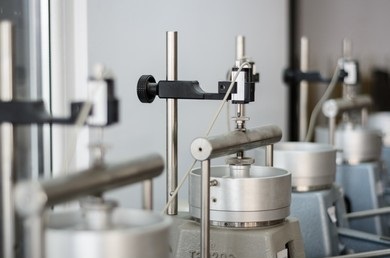
Soil is a key factor in agriculture, not only as a basis for growing crops but also to secure people's living standards, establish business premises and promote economic growth. The pollution of some heavy metals directly affects the development of crops, destroys the business premises, and seriously hinders economic development. If the human body ingests too many heavy metals will also directly endanger health.
Metal detection is the focus of soil testing, as different types of metals have different properties, boiling points, and their presence in the soil in different forms. Therefore, Lifeasible has different pre-treatment and testing methods for soil samples, and because of the low metal content and high testing difficulty in soil samples, we have very strict requirements for each step of pre-treatment, on-board testing, and report issuance.
 Figure 1. Soil metal element pollution detection and analysis process.
Figure 1. Soil metal element pollution detection and analysis process.
Spectral detection technology is one of Lifeasible's important technologies for detecting heavy metals contained in soil, with high sensitivity, but the detection operation process is very complex, the process is cumbersome, the detection time is long, and the detection equipment requirements are high.
In contrast to spectroscopic techniques, electrochemical detection is mainly done through electrochemical sensors for soil metals. Lifeasible can quickly detect soil metal content through automated chemical detection.
Lifeasible uses a combination of metal ions and specific proteins in the fixed electrode material to effectively modify the protein structure and quantitatively and accurately detect metals in soil samples based on a sensitive capacitive signal sensor.
Lifeasible offers an enzymatic inhibition technique that reduces the enzymatic activity of an enzyme by changing the structure and properties of the enzyme through the reaction between heavy metal ions and the enzyme activity factor and detects metals in soil with the help of a corresponding instrument.
Lifeasible detects metals in soil samples by immunoassay, which is a relatively sensitive and unique method.
Lifeasible detects soil metals through the interaction of molecules within or between molecules.
Raman spectroscopy is a very effective fingerprinting method, and Lifeasible uses Raman spectroscopy for non-labeled, non-destructive detection with excellent sensitivity and accuracy. In the process of soil heavy metal detection, Lifeasible uses this method to achieve the determination of metal particles in the soil.
Lifeasible has different pre-treatment and detection methods for soil samples from different sources. We have improved and enhanced the accuracy and convenience of our methods to provide efficient and widely applicable analysis of total and active state metals in soil and of course, the bioavailable state of soil heavy metals. Please contact our staff to clarify how we can meet each of our customers' soil metal testing needs.